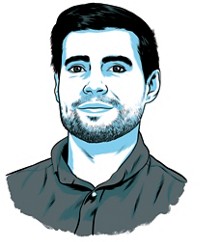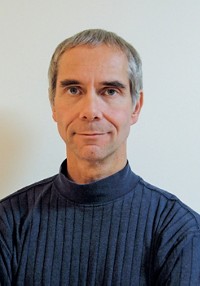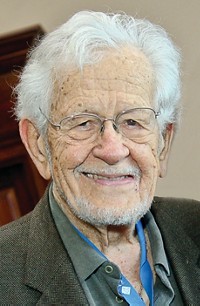Advertisement
Grab your lab coat. Let's get started
Welcome!
Welcome!
Create an account below to get 6 C&EN articles per month, receive newsletters and more - all free.
It seems this is your first time logging in online. Please enter the following information to continue.
As an ACS member you automatically get access to this site. All we need is few more details to create your reading experience.
Not you? Sign in with a different account.
Not you? Sign in with a different account.
ERROR 1
ERROR 1
ERROR 2
ERROR 2
ERROR 2
ERROR 2
ERROR 2
Password and Confirm password must match.
If you have an ACS member number, please enter it here so we can link this account to your membership. (optional)
ERROR 2
ACS values your privacy. By submitting your information, you are gaining access to C&EN and subscribing to our weekly newsletter. We use the information you provide to make your reading experience better, and we will never sell your data to third party members.
Biological Chemistry
Nobel Laureate Signature Award for Graduate Education in Chemistry
Recipients are honored for contributions of major significance to chemistry
by Amanda Yarnell
January 21, 2008
| A version of this story appeared in
Volume 86, Issue 3
Sponsored by Mallinckrodt Baker Inc.
A hallmark of the graduate student experience is a long dry spell when your project seems to go absolutely nowhere, no matter what you do. For Rebecca A. Nelson, 30, who recently completed her Ph.D. at the University of California, Los Angeles, that drought lasted a full three years.
Nelson, then a graduate student in the lab of UCLA professor of chemistry and biochemistry David S. Eisenberg, was working to solve the structure of amyloid fibrils, curious protein structures associated with numerous neurodegenerative diseases, including Alzheimer's, Parkinson's, and Huntington's, as well as type 2 diabetes. All she had to work from, however, were microscopic needlelike crystals of a model amyloid-forming peptide.
Because the crystals were far too small to analyze by conventional single-crystal X-ray diffraction techniques, Nelson threw herself into determining their structure using powder X-ray diffraction of crystal aggregates. But even after three years of trying, she couldn't untangle the data she collected into a verifiable amyloid structure. She even tried electron crystallography, without success.
At that point, the amyloid structure "could have faded away as impossible," Eisenberg says. "But Rebecca is a person of tremendous persistence, and she had the scientific self-confidence that she would solve this problem."
Finally, thanks to technological breakthroughs at the European Synchrotron Research Facility in France, Nelson managed to collect single-crystal X-ray diffraction data from her tiny crystals. The result was the first report of an amyloid's structure at atomic resolution (Nature 2005, 435, 773). This remarkable structure continues to influence our understanding of how and why proteins misfold into amyloid fibrils, Eisenberg notes.
"I have to admit that when she started, I thought she chose an impossible project," says James U. Bowie, also a UCLA professor of chemistry and biochemistry. But Nelson has "shown truly remarkable resilience in triumphing over a challenging chemical problem," adds his UCLA colleague Todd O. Yeates.
Nelson, Eisenberg, and coworkers have gone on to solve the structures of dozens of other amyloid-forming peptides that feature in human diseases (Nature 2007, 447, 453). Even though their amino acid sequences are very different, all of these peptides share a common "steric zipper" structure, in which neighboring β-sheets tightly interdigitate.
Nelson's structures have also offered an atomic-level hypothesis for the basis of prion "strains." Biologists had suspected that a single protein could give rise to multiple, distinguishable diseases when it forms different amyloid-like infectious protein agents known as prions. "This qualitative, biological idea now seems to have a basis in hard chemical structures," Yeates says.
Nelson, who was born in Paris and received a B.S. in chemistry from Purdue University in 1999, was awarded a Ph.D. in 2006. As a postdoc in Eisenberg's lab, she is continuing her work on amyloid structures. She is also helping to curate and publicize UCLA's Database of Interacting Proteins (dip.doe-mbi.ucla.edu). A team player in and out of lab, Nelson remains a proud member of the Killer Guppies, a local dragonboat racing team. Wielding a paddle in the team's 20-person, 40-foot canoe painted to look like a dragon is "totally a team performance," she says.
Eisenberg, whose lab uses both computational and experimental methods to understand the protein interactions that control the life and death of cells, received a B.S in biochemical sciences from Harvard University and a Ph.D. in theoretical chemistry from Oxford University. After completing postdocs at Princeton University and California Institute of Technology, he joined the faculty at UCLA in 1969, where he has remained ever since. He became a Howard Hughes Medical Investigator in 2001.
The award address will be presented before the Division of Biological Chemistry.







Join the conversation
Contact the reporter
Submit a Letter to the Editor for publication
Engage with us on Twitter